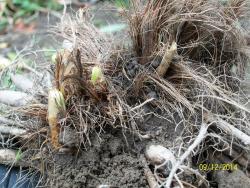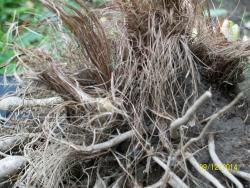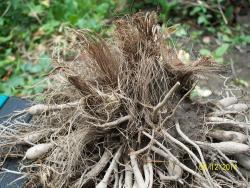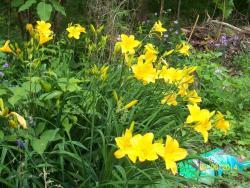@carolyngrove,

This is an old thread and I have learned a whole lot from the people in this forum since this thread was originally posted. Hard to believe now looking back just how ignorant I was about daylilies, I still have so much to learn.
You do not say what zone you are in but here in my zone I have been busy digging, separating and replanting daylilies. I consider October to be the best month for me to do this type work in my zone.
I am a little concerned about the wording you used in your post, but that may just be that you are new to daylilies. You said you "pulled up" the daylilies and that they were "beautiful/Plump " tubes? I do have a seedling bed with soil so light and porous that I could possibly "pull up" some young daylily seedlings root and all, but I think that would be a very rare instance and most of my daylilies have to be dug with a garden fork or shovel. If your daylilies are large enough and old enough to need to be divided then I doubt any of them could be pulled up as whole plants with the roots.
Also I have never thought of daylilies as having a tube like structure to them, but I suppose the fans could suggest a tube like growth. Now the only reason I mention this is being you are a new member, it is not uncommon for new members improperly identify other plants as daylilies. So I just want to be reassured the plants we are talking about are actually (hemerocallis) daylilies.
But, all that aside, if you have your plants already dug, clean up all the hairy fringy looking material (remains of old daylily leaves)
if you want to have the plants looking nice and clean when you replant them. I am not sure it actually makes any difference to the daylily if you do this step or not.Separate the plants into the size divisions you want. Then, If you are in a zone that will allow you to replant them safely at this time of year outdoors then go ahead and plant them.



